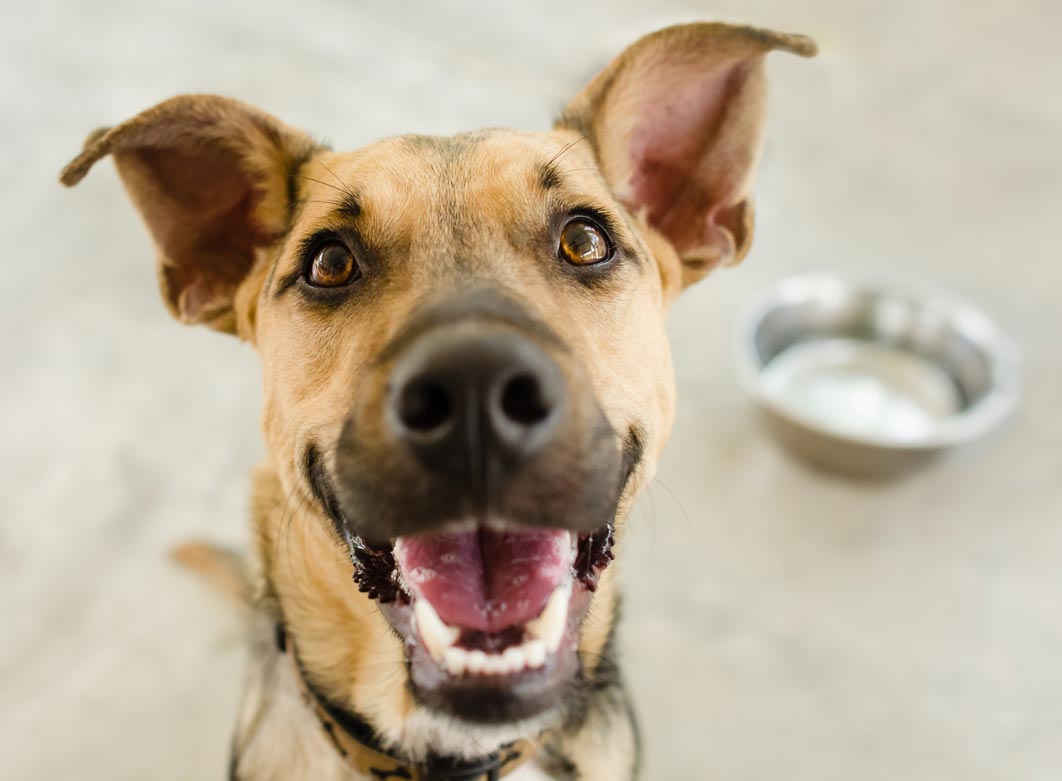Canine Body Language: What Is Your Dog Saying?

Dogs use body language to talk to each other and to humans. They are really quite expressive when you know what to look for. Most of the time, people get to know their own dog very well and can determine how they're feeling pretty easily over time.
But it's important to dissect and understand the exact movements dogs make that try to communicate certain things so you can apply that knowledge to any dog you meet. You can also teach your family, especially any children you interact with, about canine body language to keep them safer when they are around dogs.
Areas of the Body Dogs Use to Communicate with Humans
Dogs use almost everything at their disposal to communicate with each other and us, including:
- Facial expression.Dogs can wrinkle their brows if they're concerned or confused. They can have relaxed or tense facial muscles depending on their mood. They can raise their eyebrows or tilt their heads if they're intently listening or trying to make sense of something.
- Mouth and lips. When a dog's mouth is relaxed and the tongue is lolling out, he is probably relaxed and happy. If his lips are pulling back from his gums, he is warning you to stay back because he might bite.
- Ears.A dog can move his ears around depending on his mood or what he's trying to communicate. They might be raised and held forward if he's paying close attention to something. He might lay them back against his head if he's angry or afraid, which could mean he might bite.
- Tail.A dog uses his tail to express himself at almost all times. Height, movement, and speed can all be used to communicate. A low, fast twitching back and forth often means the dog is nervous. A mid-height, slow wag can mean he's unsure.
All dog body language should be read together and there can be some small individual differences between dogs. Watch your dog enough, and you will begin to learn what he's trying to say. Next, we'll give some general characteristics of the body language of dogs displaying certain feelings.
Dog Body Language That Indicates Fear or Nervousness
It's critical to know what a dog does when he's scared because a frightened dog can act in unexpected ways, including by biting. Here are some of the common body language markers for a dog that is scared:
- Tail low to the ground or even tucked between the legs up under the belly.
- Ears low or held back.
- Body crouched low to the ground.
- Tail making tiny movements or not moving.
- Licking or smacking the lips.
- Yawning.
- Dilated pupils.
- Panting.
- Head may be held down.
If a dog's hackles are raised (the fur along his back is up) and he's pulling his lips back from his teeth while other above cues are present, he is indicating that he's likely to engage in fear-based aggression.
A dog that is extremely fearful may roll on his back, turn his face away from everyone, and even urinate.
Canine Body Language Indicating Relaxation and Happiness
A dog that is feeling happy and relaxed may show some of these body language cues:
- Relaxed facial muscles.
- Tongue lolling out of the mouth.
- Tail relaxed and down, probably wagging.
- Ears up straight, not forward or laid back on the head.
- Head held high.
This dog is happy, and you may be able to approach him slowly and respectfully with the owner's permission.
Body Language Indicating a Dog Is Alert and Exploring Something
A dog that has noticed something he'd like to check out might show the following body language:
- Ears slightly forward.
- Tenser stance and facial muscles than a totally relaxed dog.
- Tail held horizontally from the body—may be wagging slowly.
- Mouth generally closed.
A dog that is alert may quickly become fearful or aggressive. He may also be gearing up to give chase, so if you're walking him, keep a tight hold on his leash.
Canine Body Language of a Dominant and Aggressive Dog
A dog that is feeling territorial or otherwise dominant and is indicating that he is ready to bite someone often shows these cues:
•Tail held high—may be twitching or jerking in tiny movements.
•Facial muscles tense and usually wrinkled.
•Lips curled and teeth showing.
•Ears rigid and forward.
•Hackles raised, including bristled tail.
This dog is quite likely to bite and should not be approached.
Dog Body Language When Ready to Play
A dog that is happy and asking for a play session usually looks like this:
- Relaxed muscles.
- Lolling tongue.
- Ears up.
- Tail up and wagging with big strokes.
- Usually jumping around and often dips into a play bow position, with the front of the body dipping down while the back stays up.
This dog wants to play. Throw a toy for him or start a tug-of-war session.
Getting to know and read canine body language takes some time and practice, but it's a useful and essential skill to have and teach others. Learn more about the body language of a dog's tail here: "What Your Dog's Tail Can Tell You."
You May Also Like These Articles:
6 Bad Behaviors in Dogs That We Help Create
How to Stop a Dog from Digging
What Your Dog's Tail Can Tell You
Why Do Some Dogs Get Obsessed with Laser Pointers?
Dogs Are More Expressive When Humans Are Watching Them
Disclaimer: This website is not intended to replace professional consultation, diagnosis, or treatment by a licensed veterinarian. If you require any veterinary related advice, contact your veterinarian promptly. Information at DogHealth.com is exclusively of a general reference nature. Do not disregard veterinary advice or delay treatment as a result of accessing information at this site. Just Answer is an external service not affiliated with DogHealth.com.


